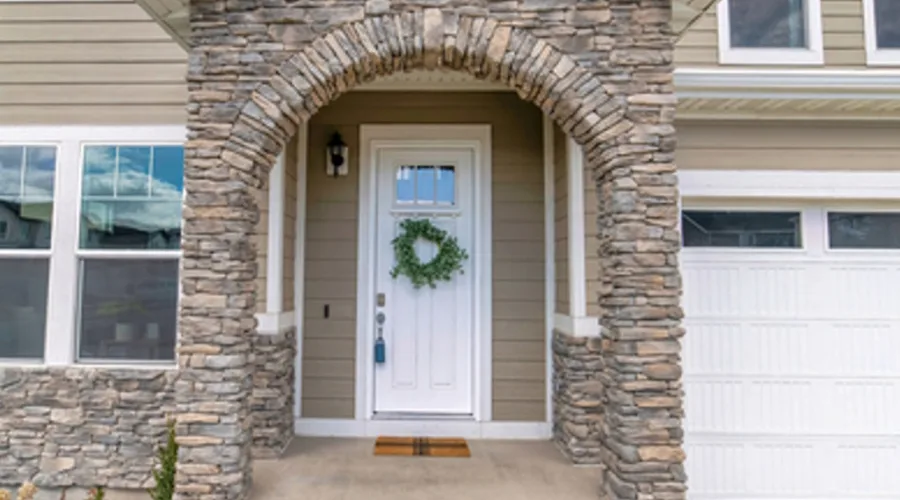Natural Stones
Among the most commonly used materials in exterior stone cladding are natural stones such as travertine, slate, limestone, and onyx. These stones are preferred for their durability as well as their aesthetic appearance. The advantages of natural stones include their durability, long lifespan, and natural look. However, some disadvantages include higher costs and maintenance requirements. In summary, natural stones are an ideal option for providing a stylish look to the exterior while also offering longevity.
Types of Natural Stone Cladding
Various natural stone cladding options are available for exterior use, including travertine, slate, limestone, and onyx. These stones are chosen for their durability and aesthetic appeal. Each stone offers different color and texture options to meet various design needs. Natural stones are known not only for providing a stylish exterior but also for their long lifespan.


Advantages and Disadvantages of Natural Stones
Natural stones offer advantages such as durability, aesthetic appeal, and a warm, natural feel. Additionally, they are environmentally friendly and easy to clean. However, disadvantages include higher costs, weight, and maintenance requirements. Some natural stones may also lose their color or become stained over time. Therefore, it is important to consider these factors when choosing natural stone cladding.
Artificial Stones
Artificial stones are a popular option for providing an aesthetic appearance in exterior cladding. These stones offer a similar look to natural stones but are lighter and more cost-effective. Available in various colors and patterns, artificial stones can complement any architectural style. They are also easy to maintain and offer durability. Artificial stone cladding adds a touch of elegance to your exterior, enhancing its appearance.
Types of Artificial Stone Cladding
Artificial stone cladding is a popular option for providing an aesthetic appearance in exterior designs. Available in various colors and patterns, these claddings offer a stylish look. Common types of artificial stone cladding include brick-like stones, limestone-like stones, granite-like stones, and marble-like stones. Due to their resemblance to natural stones and cost-effectiveness, artificial stones are preferred choices.
Durability and Maintenance of Artificial Stones
Artificial stones are generally more durable than natural stones and offer a long-lasting cladding option. Their surface is waterproof, reducing the likelihood of problems such as cracking or color fading. Maintenance is also easy, requiring only regular cleaning with a cloth or mild detergent. Additionally, artificial stone claddings maintain their color over time, providing an aesthetic appearance for years.
Brick Claddings
Brick claddings are a commonly preferred option in exterior designs. With various colors and textures of fired bricks, different designs can be created. Brick claddings stand out for their durability and natural look. Additionally, they provide thermal insulation, contributing to energy efficiency. aesthetically appealing, brick claddings add characteristic elegance to exteriors.
Types of Fired Brick Cladding
Fired brick claddings are commonly preferred in exterior designs, offering diversity with different colors and textures. These claddings provide an aesthetic look while being durable and natural. Additionally, they contribute to thermal insulation, enhancing energy efficiency. Fired brick claddings add characteristic elegance to exteriors and are long-lasting.
Aesthetic and Functional Features of Brick Claddings
Brick claddings add characteristic elegance to exteriors. Offering diversity with different colors and textures, they provide an aesthetic look. Additionally, bricks stand out for their durability and natural structure. They enhance energy efficiency by providing thermal insulation. Fired brick claddings are long-lasting and require minimal maintenance. They are also known for their fire resistance. Thus, brick claddings are a preferred option for both aesthetic and functional purposes in exteriors.
Wooden Claddings
Wooden claddings provide a natural and warm look to exteriors. Different wood types can be used to create various designs. Wooden panels typically require special installation and are treated with protective varnishes to enhance durability against external factors. Wooden claddings allow surfaces to breathe and contribute to insulation properties, enhancing energy efficiency. Aesthetic and elegant, wooden claddings create a natural and warm atmosphere.
Types of Wooden Exterior Claddings
Wooden claddings provide a natural and warm look to exteriors. Different wood types can be used to create various designs. Wooden panels typically require special installation and are treated with protective varnishes to enhance durability against external factors. Wooden claddings allow surfaces to breathe and contribute to insulation properties, enhancing energy efficiency. Aesthetic and elegant, wooden claddings create a natural and warm atmosphere.
Durability and Insulation Properties of Wood
Wooden claddings provide a natural and warm look to exteriors while offering durability and insulation properties. Wood is naturally resistant to environmental effects and ideal for long-term use. Additionally, wood’s high insulation property enhances energy efficiency, providing a warmer environment indoors. Therefore, wooden exterior claddings are both aesthetic and practical choices.
Metal Claddings
Metal claddings provide a modern and stylish look to exteriors while ensuring durability. Made using various metal materials, these claddings enhance the aesthetics of buildings and offer longevity. Different designs can be achieved using metals like aluminum, steel, or copper. Metal claddings withstand harsh weather conditions, maintaining their shine for a long time without requiring much maintenance. Additionally, they possess fire-resistant properties.
Types of Metal Exterior Claddings
Metal claddings provide a modern and stylish look to exteriors while ensuring durability. Made using various metal materials, these claddings enhance the aesthetics of buildings and offer longevity. Different designs can be achieved using metals like aluminum, steel, or copper. Metal claddings withstand harsh weather conditions, maintaining their shine for a long time without requiring much maintenance. Additionally, they possess fire-resistant properties.
Longevity and Stylish Appearance of Metal Claddings
Metal claddings provide a modern look to exteriors while ensuring longevity. Made using various metals, such as aluminum, steel, or copper, these claddings enhance the aesthetics of buildings. Metal claddings maintain their shine for a long time and require minimal maintenance. Additionally, they are fire-resistant. Therefore, metal claddings are an ideal choice for modern and durable exterior designs.
